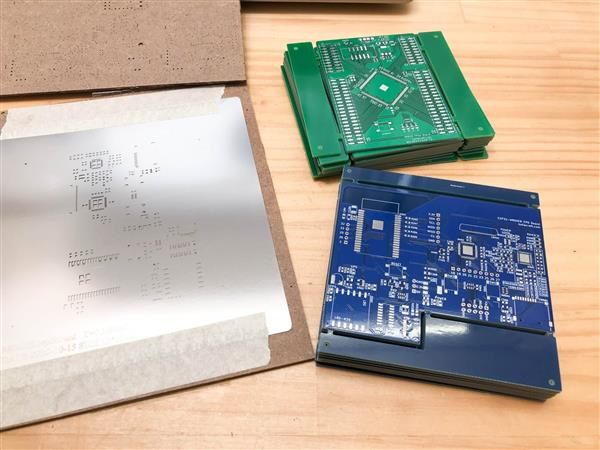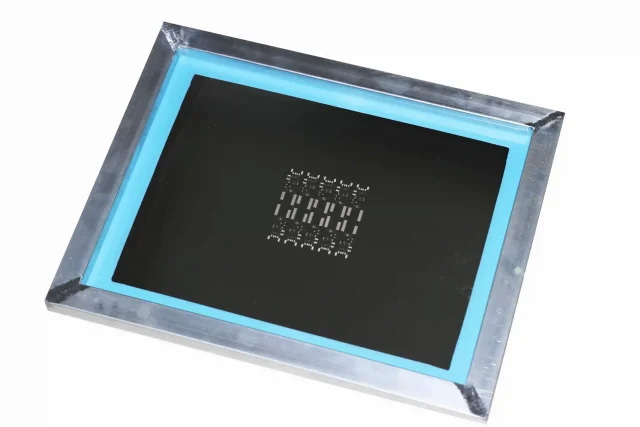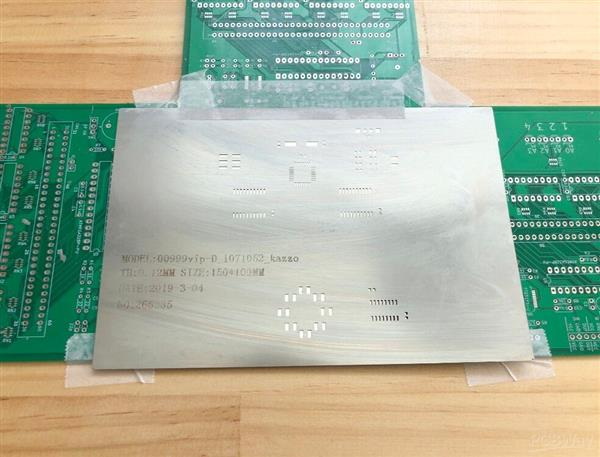Content Menu
● Introduction to SMT Stencil Alignment
>> Importance of Accurate Alignment
● Design Elements for Accurate Alignment
>> Fiducial Marks
>> Registration Holes
>> Stencil Dimensions
● Techniques for Achieving Accurate Alignment
>> Automated Stencil Printers
>> Manual Alignment
● Common Challenges in SMT Stencil Alignment
>> Misaligned Fiducial Marks
>> Stencil Warping
>> Thermal Expansion
>> Mechanical Stress
● Best Practices for SMT Stencil Alignment
● Advanced Alignment Techniques
>> Laser Alignment Systems
>> AI-Powered Alignment
● Environmental Considerations
● Conclusion
● Frequently Asked Questions
>> 1. What are the primary design elements for ensuring accurate SMT stencil alignment?
>> 2. How does stencil warping affect alignment?
>> 3. What are the benefits of using automated stencil printers?
>> 4. How does thermal expansion impact SMT stencil alignment?
>> 5. What are common defects resulting from poor SMT stencil alignment?
Accurate alignment of SMT (Surface Mount Technology) stencils is crucial for ensuring the quality and reliability of PCB (Printed Circuit Board) assemblies. Misalignment can lead to defects such as solder bridges, insufficient solder paste, and tombstoning, which can compromise the functionality of electronic devices. In this article, we will explore the techniques, design considerations, and common challenges associated with achieving precise SMT stencil alignment.

Introduction to SMT Stencil Alignment
SMT stencils are used to apply solder paste onto PCBs during the assembly process. The stencil contains apertures that correspond to the component pads on the PCB, allowing for precise solder paste deposition. However, achieving accurate alignment between the stencil and PCB is essential to prevent defects and ensure reliable solder joints.
Importance of Accurate Alignment
Accurate alignment ensures that solder paste is deposited correctly onto the component pads, preventing issues such as:
- Solder Bridging: Excess solder paste can bridge between adjacent pads, causing electrical shorts.
- Insufficient Solder Paste: Misalignment can result in inadequate solder paste on pads, leading to weak solder joints.
- Tombstoning: Components may stand on end due to uneven solder paste distribution, affecting component placement and soldering quality.
Design Elements for Accurate Alignment
Several design elements play a critical role in ensuring accurate SMT stencil alignment:
Fiducial Marks
Fiducial marks are reference points placed on both the stencil and PCB. These marks are crucial for automated alignment systems, which use camera vision to align the stencil with the PCB. Proper placement and visibility of fiducial marks are essential for precise alignment. Typically, fiducial marks are circular or square and are positioned in a way that they are easily detectable by the alignment system.
Registration Holes
Registration holes are optional features that can be used to align the stencil with the PCB. These holes provide additional reference points and can help ensure that the stencil dimensions match the PCB dimensions accurately. Registration holes are particularly useful in manual alignment processes where visual inspection is relied upon.
Stencil Dimensions
The dimensions of the stencil must perfectly match those of the PCB. Any discrepancies can lead to misalignment and soldering defects. It is critical to ensure that the stencil is designed with precise dimensions to fit the PCB accurately. This includes considering the thickness of the stencil material and its potential for expansion or contraction under different environmental conditions.
Techniques for Achieving Accurate Alignment
There are both automated and manual techniques for aligning SMT stencils:
Automated Stencil Printers
Automated stencil printers use advanced camera vision systems to quickly and accurately align the stencil with the PCB. These machines are ideal for high-volume production, where speed and precision are paramount. Automated systems can reduce human error and improve consistency across batches. They also offer real-time feedback and adjustment capabilities, ensuring that any misalignment issues are addressed promptly.
Manual Alignment
In low-volume production or for small-scale projects, manual alignment techniques are often used. This involves visually aligning the stencil with the PCB using fiducial marks or registration features. Manual alignment requires precision and care but can be effective with the right tools and techniques. It is essential to use magnifying glasses or microscopes to verify alignment accuracy and ensure that the stencil is securely held in place during solder paste deposition.

Common Challenges in SMT Stencil Alignment
Despite the best efforts, several challenges can arise during the alignment process:
Misaligned Fiducial Marks
Incorrect placement of fiducial marks can lead to misalignment. It is crucial to double-check the placement of these marks during PCB design. Misaligned fiducial marks can confuse automated alignment systems, leading to incorrect positioning of the stencil.
Stencil Warping
Poor handling or low-quality materials can cause the stencil to warp, affecting its ability to lie flat on the PCB. This can result in uneven solder paste deposition. Stencil warping is more common in stencils made from thinner materials or those that have been stored improperly.
Thermal Expansion
Temperature fluctuations can cause thermal expansion or contraction of materials, affecting alignment. Maintaining a stable environment is important to minimize these effects. Both the PCB and stencil materials can expand or contract, so it is crucial to consider these factors during the design phase.
Mechanical Stress
Mechanical stress during handling can introduce misalignment. Careful handling and storage of stencils are essential. Stencils should be stored flat and protected from bending or creasing, which can cause permanent deformation.
Best Practices for SMT Stencil Alignment
To ensure accurate alignment, follow these best practices:
1. Use High-Quality Materials: Ensure that the stencil is made from high-quality materials to prevent warping. High-quality materials are less prone to deformation and maintain their shape better under different environmental conditions.
2. Maintain a Clean Workspace: A clean and well-lit workspace aids in visual alignment. Dust and debris can interfere with automated alignment systems and obscure fiducial marks during manual alignment.
3. Inspect Alignment: Use magnifying glasses or microscopes to verify alignment accuracy. Visual inspection is crucial, especially in manual alignment processes, to ensure that the stencil is correctly positioned.
4. Secure the Stencil: Once aligned, secure the stencil to prevent movement during solder paste deposition. This can be achieved using clamps or vacuum systems that hold the stencil firmly in place.
5. Regular Maintenance: Regularly inspect and maintain automated alignment equipment to ensure optimal performance. Calibration checks should be performed periodically to ensure that the system remains accurate.
Advanced Alignment Techniques
In addition to traditional methods, advanced alignment techniques are being developed to improve precision and efficiency:
Laser Alignment Systems
Some modern systems use laser technology to enhance alignment accuracy. These systems can detect even slight misalignments and adjust the stencil position accordingly. Laser alignment offers high precision and can be integrated into both automated and manual processes.
AI-Powered Alignment
Artificial intelligence (AI) is being integrated into alignment systems to improve accuracy and speed. AI can analyze data from previous alignments to predict and correct potential misalignments before they occur. This technology holds great promise for future advancements in SMT assembly.
Environmental Considerations
Environmental factors such as temperature and humidity can affect the alignment process. It is essential to maintain a stable environment to minimize the impact of thermal expansion and material deformation. A controlled environment also helps in maintaining the quality of the solder paste and ensuring consistent results.
Conclusion
Accurate alignment of SMT stencils is vital for successful PCB assembly. By understanding the design elements, techniques, and common challenges associated with stencil alignment, manufacturers can ensure high-quality solder joints and reliable electronic devices. Implementing best practices and using advanced alignment techniques can significantly improve the efficiency and accuracy of the SMT assembly process.

Frequently Asked Questions
1. What are the primary design elements for ensuring accurate SMT stencil alignment?
Fiducial marks and registration holes are key design elements that help in aligning the stencil with the PCB. Stencil dimensions must also match the PCB dimensions precisely.
2. How does stencil warping affect alignment?
Stencil warping can cause uneven solder paste deposition because the warped stencil does not lie flat on the PCB. This can lead to defects such as insufficient solder paste or solder bridges.
3. What are the benefits of using automated stencil printers?
Automated stencil printers offer rapid and precise alignment using camera vision systems, making them ideal for high-volume production where speed and accuracy are critical.
4. How does thermal expansion impact SMT stencil alignment?
Thermal expansion due to temperature fluctuations can cause materials to expand or contract, affecting the alignment between the stencil and PCB. Maintaining a stable environment helps mitigate this issue.
5. What are common defects resulting from poor SMT stencil alignment?
Poor alignment can lead to defects such as solder bridging, insufficient solder paste, and tombstoning, which can compromise the functionality and reliability of electronic devices.




















